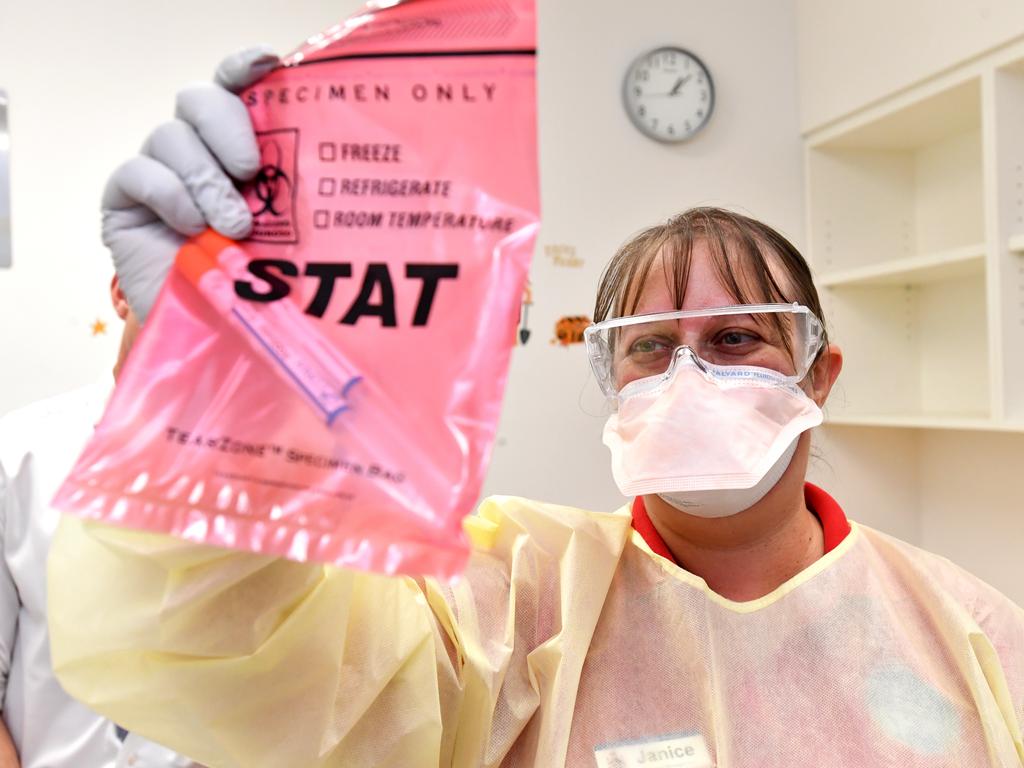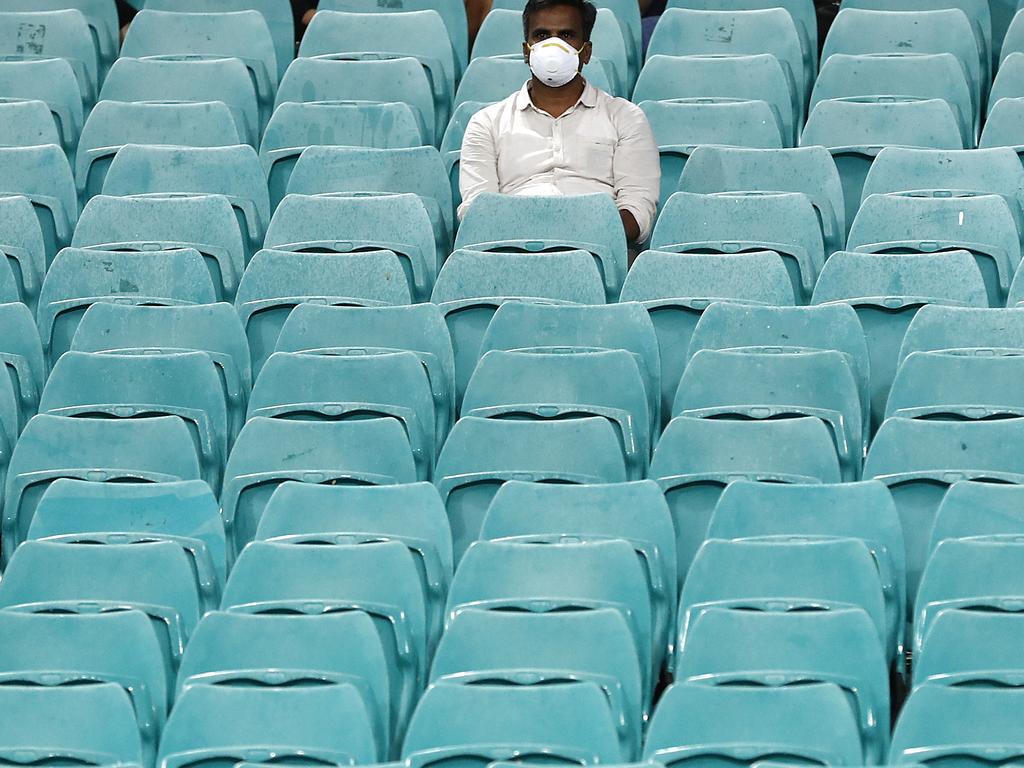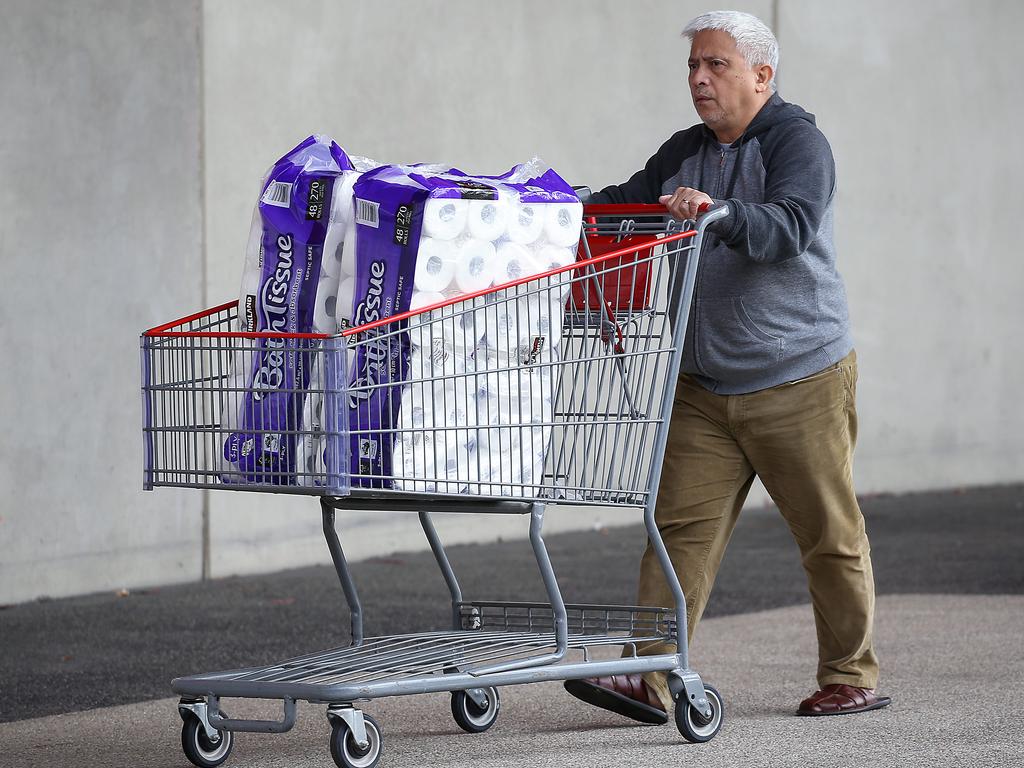Coronavirus: People without symptoms spreading COVID-19
Experts are baffled by the spread of COVID-19 in people with no symptoms, pointing to a “hidden web of infections” that is impossible to contain.
Coronavirus is a stealth virus. Infected carriers without symptoms are slipping under the radar. Now research warns these people are the unseen “super spreaders” behind the startling advance of the disease.
The warning signs of COVID-19 infection are cough, fever and difficulty breathing.
It’s supposed to be the trigger point for self-isolation, an indication of peak danger of infection.
If true, such warning signs should make the virus relatively easy to contain. The ill can be quickly identified and isolated, and the risk of passing on infection greatly reduced.
But it isn’t.
If shedding before symptoms, how is the virus being transmitted if people dont have cough or running noses etc? Kissing, contaminated hands and then to others that way? Hard to see if people wash hands properly and avoid close contact how asymptomatics can be a big factor. https://t.co/wRiOYpjHyj
— Peter Collignon (@CollignonPeter) March 15, 2020
For weeks, international health officials have been drawing attention to the unusual “asymptomatic” spread of the disease. Medical scientists attempting to understand the virus have noticed “hidden webs” of infections.
RELATED: Follow the latest coronavirus updates
RELATED: 11 biggest coronavirus questions
But that message has generally been downplayed.
“Some spread might be possible before people show symptoms; there have been reports of this occurring with this new coronavirus, but this is not thought to be the main way the virus spreads,” the US Centres for Disease Control website notes.
But a newly released series of studies indicate people without COVID-19 symptoms are acting as unseen “super spreaders”. If true, this renders textbook viral outbreak containment tactics obsolete.
INVISIBLE ENEMY
Science journal Nature says the warning sign of “covert transmission” is finding sick people with no recent international travel or contact with anyone displaying symptoms.
The exact rate of such transmission is unknown. But inferences are it’s very high.
“We need to make policy decisions and clinical decisions now,” London-based infectious disease specialist Jeremy Farrar told Nature. “You can’t say, ‘Let’s wait a month until we have the data’.”
The dramatic outbreak in the US state of Massachusetts is a case in point.
Researchers believe at least 82 cases out of 2000 were contracted from spreaders not yet showing symptoms. One event stood out in their analysis.
New Lancet paper with good/bad news. Bad news, Viral shedding (time you can spread to others) is 20 days. Good news, you seem to stop shedding soon after cough is gone. If you are sick #StayAtHome #coronavirushttps://t.co/5AFV1dkDIi pic.twitter.com/3BcRBC9tkO
— Dr Vyom Sharma (@drvyom) March 15, 2020
In February, a biotechnology company held a staff conference. In the days after the event, three employees fell ill and tested positive for the virus.
Later, more than 70 diagnosed COVID-19 cases were traced back to the conference.
It is an alarming “super spreader” event. And it’s not an isolated case.
Germany last week tested 24 passengers on a flight from Israel after five displayed symptoms.
The tests revealed four apparently perfectly healthy carriers. Further analysis revealed these “healthy” passengers were carrying a greater virus load on their breath (meaning they were more infectious) than those who were obviously sick.
RELATED: Six coronavirus facts experts want you to know
RELATED: What to do if you get sick

BY THE NUMBERS
New large-scale mathematical modelling studies have exposed a significant amount of “asymptomatic” spread within Singapore and Tianjin Province, China.
One preprint study indicates between 48 per cent and 66 per cent of 91 cases in Singapore must have contracted the virus from a carrier not showing symptoms. In China, the figure was much higher – some 62 per cent and 77 per cent.
Another points to people being infectious on average between 2.55 and 2.89 days before the onset of symptoms.
“Our analysis would suggest that pre-symptomatic transmission is pretty commonplace,” the Simon Fraser University study’s lead author, Caroline Colijn, wrote.
“In particular, the portion of transmission events that occur before symptom onset is a central quantity for infection control … Half of all secondary infections (must) be prevented to control (its) spread.”
RELATED: Do I have a cold, flu or coronavirus?
RELATED: What are your chances of dying from coronavirus?

MIXED MESSAGES
“You really need to just focus on the individuals that are symptomatic. And you do the classic blocking and tackling of public health: identify cases, get them diagnosed, get them treated, get them isolated, and then do the contact tracing,” US Secretary of Health and Human Services Alex Azar told US media earlier this month.
“Then (we) engage in the types of community mitigation measures that bring this down – slow contact with individuals, social distancing, the full armamentarium. But it really does depend on symptomatic presentation.”
Now that data reveal GI symptoms are common with #COVID19 and the stomach and intestines can harbor the virus, I’m hearing more and more reports like this of people with confirmed cases presenting with diarrhea. This is not just a respiratory disease. Is sheds in stool too. https://t.co/WDmiUjFVbn
— Brennan Spiegel, MD, MPH (@BrennanSpiegel) March 15, 2020
Similar messages have been made by Australian politicians and health agencies.
But this no longer appears to be the case.
Containment and mitigation efforts must be redoubled, Dr Farrar says, as well as tracking down everyone exposed to someone diagnosed with the virus in the days before they fell ill.
“Sometimes people have hundreds of contacts, so that is a very intensive effort,” he says. “But it’s absolutely critical to do it because even though it probably won’t completely contain the outbreak, it buys you time to make sure hospitals are ready, to think about the consequences of closing schools.”
RELATED: How ‘flattening the curve’ saves lives
RELATED: Can I still go to the gym?

That means enacting a testing regimen that draws on samples from people in all age groups throughout the community, looking for people who have been infected.
Only this can uncover the true extent of transmission, he says.
But such studies take time.
So social distancing remains the key tool in slowing COVID-19’s spread.
“Right now, we need to do anything that buys us one week, two weeks; anything to delay will have a dramatic impact,” says Dr Farrar. “If London, Seattle or Paris goes through what northern Italy is going through at the moment, it will be devastating.”
Jamie Seidel is a freelance writer | @JamieSeidel



